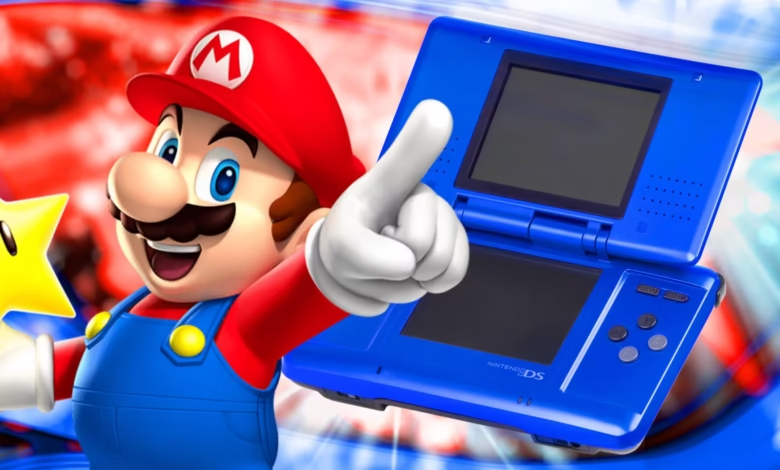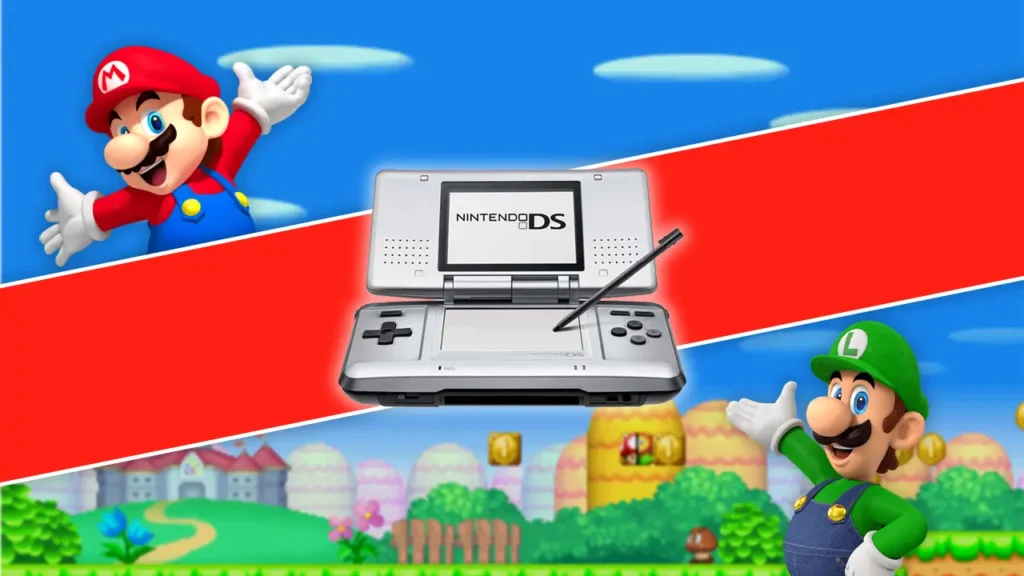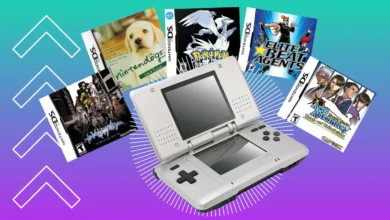The Nintendo DS: A Revolutionary Handheld Gaming Console

Introduction
The Nintendo DS, often abbreviated as NDS, is a dual-screen handheld game console developed and released by Nintendo. Launched in 2004, the DS (which stands for “Developers’ System” or “Dual Screen”) quickly became one of the most popular and influential gaming devices of its time. With its innovative design, unique features, and a vast library of games, the Nintendo DS redefined portable gaming and left an indelible mark on the gaming industry. This article explores the history, features, impact, and legacy of the Nintendo DS, highlighting why it remains a beloved console among gamers worldwide.
The Birth of the Nintendo DS
The Nintendo DS was first unveiled at E3 2004, surprising the gaming community with its unconventional design. At a time when handheld gaming was dominated by Nintendo’s own Game Boy Advance (GBA) and Sony’s newly announced PlayStation Portable (PSP), the DS stood out with its dual-screen setup, touchscreen capabilities, and a focus on innovation rather than raw graphical power.
Nintendo’s decision to introduce the DS was a bold move. The company was already a dominant force in the handheld market with the Game Boy series, but it recognized the need to evolve and experiment with new ideas. The DS was initially positioned as a “third pillar” in Nintendo’s product lineup, alongside the Game Boy and home consoles like the GameCube. However, its overwhelming success eventually led to the discontinuation of the Game Boy line, cementing the DS as Nintendo’s flagship handheld.
Design and Features
The Nintendo DS introduced several groundbreaking features that set it apart from its competitors:
- Dual Screens: The most distinctive feature of the DS was its dual-screen design. The bottom screen was a touchscreen, while the top screen served as a traditional display. This setup allowed for innovative gameplay mechanics, such as using the touchscreen for controls, maps, or inventory management while keeping the top screen focused on the main action.
- Touchscreen Technology: The DS was one of the first gaming consoles to incorporate a touchscreen, paving the way for intuitive and interactive gameplay. Players could use a stylus or their fingers to interact with the screen, enabling new types of games and experiences.
- Microphone: The DS also included a built-in microphone, which was used in various games for voice commands, communication, and unique gameplay elements. For example, in Nintendogs, players could issue voice commands to their virtual pets.
- Wireless Connectivity: The DS featured wireless connectivity, allowing players to connect with other DS consoles for multiplayer gaming. This feature was a significant step forward for portable gaming, enabling social interactions and competitive play without the need for cables.
- Backward Compatibility: The DS was backward compatible with Game Boy Advance (GBA) games, thanks to a second cartridge slot. This feature ensured that players could continue enjoying their existing GBA libraries while transitioning to the new console.
- PictoChat: The DS included a built-in application called PictoChat, which allowed users to send text and drawings to other nearby DS consoles. While primitive by today’s standards, PictoChat was a fun and innovative way for players to communicate.
The Nintendo DS Library: A Treasure Trove of Games
One of the key factors behind the Nintendo DS’s success was its extensive and diverse game library. The console catered to a wide range of audiences, from casual gamers to hardcore enthusiasts. Some of the most iconic and beloved games on the DS include:
- Nintendogs: A pet simulation game that showcased the DS’s touchscreen and microphone capabilities. Players could care for and interact with virtual dogs, making it a hit among casual gamers and animal lovers.
- Mario Kart DS: This installment of the popular racing series introduced online multiplayer to the franchise, allowing players to compete against others worldwide.
- New Super Mario Bros.: A return to the side-scrolling platforming roots of the Mario series, this game was a critical and commercial success, selling millions of copies worldwide.
- The Legend of Zelda: Phantom Hourglass: This action-adventure game utilized the DS’s touchscreen for innovative controls and puzzle-solving, offering a fresh take on the beloved Zelda franchise.
- Brain Age: Train Your Brain in Minutes a Day!: Part of the “Touch Generations” line of games, Brain Age was designed to stimulate mental acuity through puzzles and exercises. It appealed to a broad audience, including non-gamers and older players.
- Pokémon Diamond and Pearl: These games brought the Pokémon franchise to the DS, introducing new Pokémon, online trading, and battling features that revitalized the series.
- Animal Crossing: Wild World: A life simulation game that allowed players to create and customize their own virtual towns, fostering creativity and social interaction.
- Professor Layton Series: A collection of puzzle-solving games with charming storytelling and brain-teasing challenges, the Professor Layton series became a fan favorite.
The DS’s library was not only vast but also diverse, offering something for everyone. From educational games to action-packed adventures, the console demonstrated the versatility of handheld gaming.

Impact on the Gaming Industry
The Nintendo DS had a profound impact on the gaming industry, influencing both game design and the broader market. Here are some of the ways the DS reshaped the landscape:
- Expanding the Gaming Audience: The DS played a crucial role in broadening the appeal of video games. With titles like Brain Age, Nintendogs, and Wii Fit (which was influenced by the DS’s success), Nintendo attracted non-traditional gamers, including women, older adults, and casual players. This expansion helped normalize gaming as a mainstream form of entertainment.
- Innovation in Game Design: The DS’s unique features encouraged developers to think outside the box. Games like The Legend of Zelda: Phantom Hourglass and Elite Beat Agents showcased how touchscreens and dual displays could be used to create fresh and engaging experiences.
- Portable Gaming Revolution: The DS set a new standard for handheld gaming, proving that portable consoles could offer experiences on par with home consoles. Its success paved the way for future handhelds, including the Nintendo 3DS and the Nintendo Switch.
- Emphasis on Accessibility: The DS’s intuitive controls and user-friendly design made gaming more accessible to people of all ages and skill levels. This focus on accessibility became a hallmark of Nintendo’s philosophy and influenced the design of subsequent consoles.
- Cultural Phenomenon: The DS became a cultural icon, with its distinctive design and popular games permeating popular culture. It was not uncommon to see people of all ages playing their DS consoles on trains, in parks, or at home.
The Legacy of the Nintendo DS
The Nintendo DS’s legacy is undeniable. With over 154 million units sold worldwide, it is one of the best-selling gaming consoles of all time, second only to its successor, the Nintendo 3DS, in the handheld category. Its influence can still be felt today in several ways:
- Nintendo’s Continued Innovation: The success of the DS reinforced Nintendo’s commitment to innovation and experimentation. This ethos is evident in the Nintendo Switch, which combines the portability of a handheld with the power of a home console.
- Handheld Gaming Evolution: The DS demonstrated the potential of handheld gaming, inspiring other companies to explore the market. Its success also solidified Nintendo’s dominance in the portable gaming space.
- Indie and Mobile Gaming: The DS’s emphasis on touchscreen controls and accessible gameplay influenced the rise of mobile gaming. Many indie developers cite the DS as an inspiration for their creative and experimental projects.
- Nostalgia and Retro Gaming: The DS remains a beloved console among retro gaming enthusiasts. Its extensive library of games continues to be celebrated, and many titles are considered classics.
- Educational and Training Applications: The DS’s use in educational and brain-training games highlighted the potential of gaming as a tool for learning and self-improvement. This legacy lives on in modern educational apps and games.
Conclusion
The Nintendo DS was more than just a gaming console; it was a cultural phenomenon that transformed the way people play and interact with games. Its innovative design, diverse library, and broad appeal made it a cornerstone of Nintendo’s success and a defining moment in gaming history. Even years after its release, the DS continues to be celebrated for its creativity, accessibility, and enduring charm. Whether you’re a longtime fan or a newcomer to the world of handheld gaming, the Nintendo DS remains a testament to the power of innovation and the joy of play.



